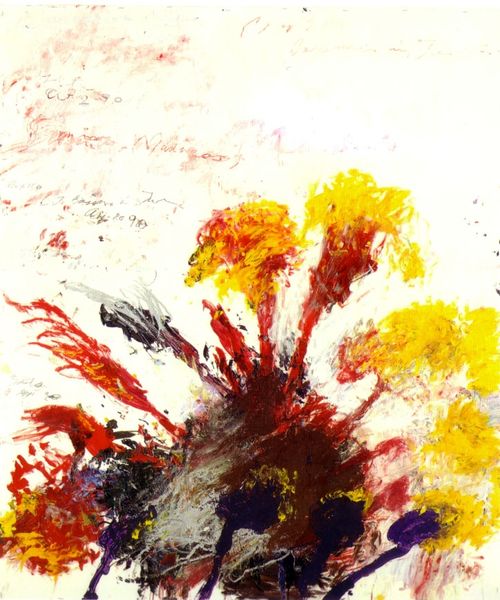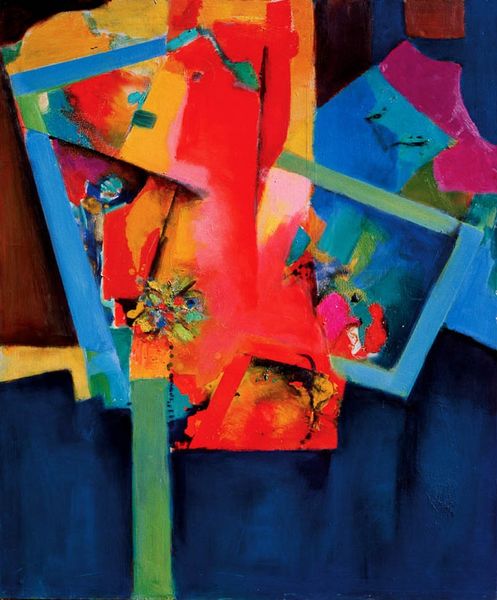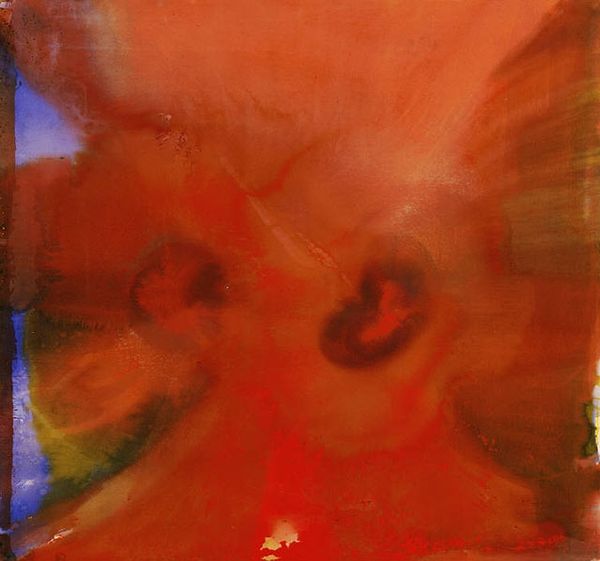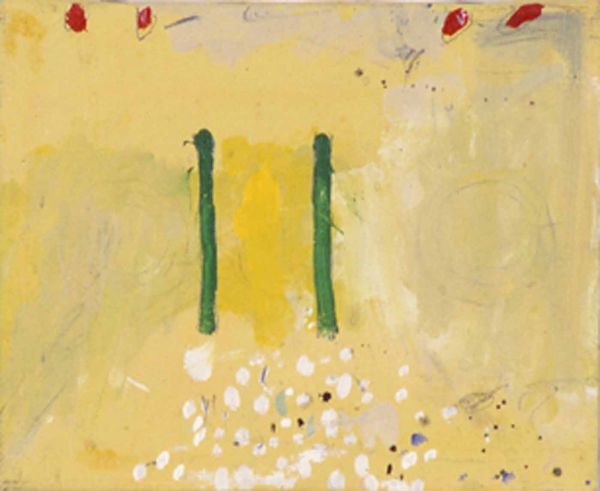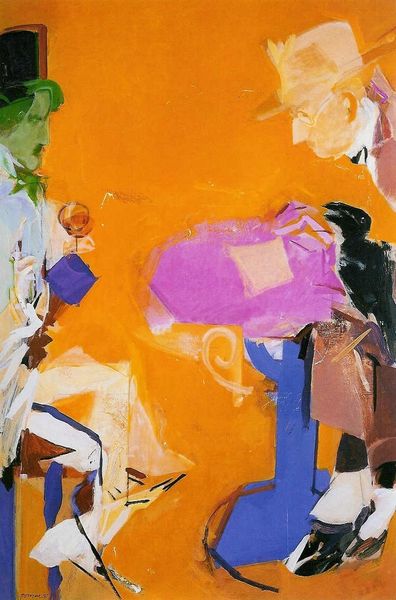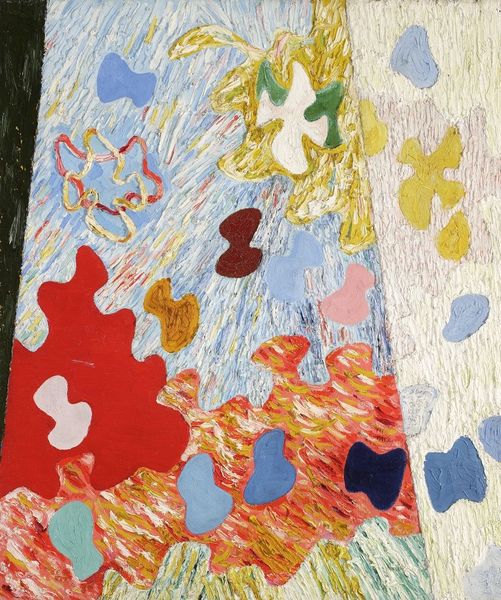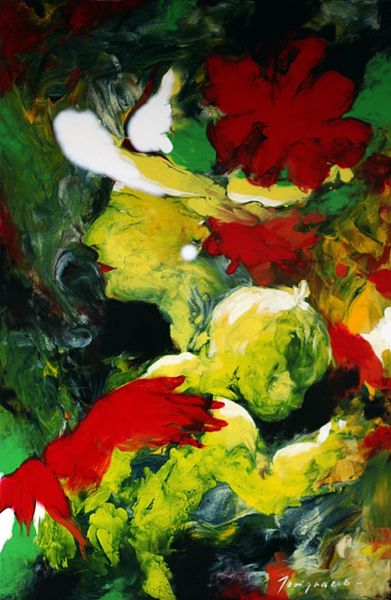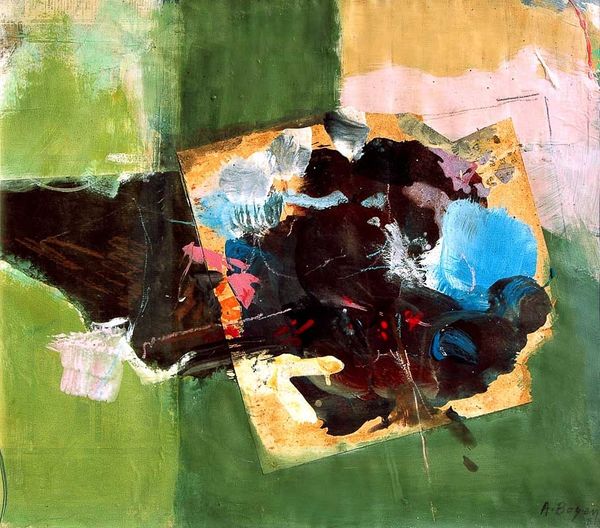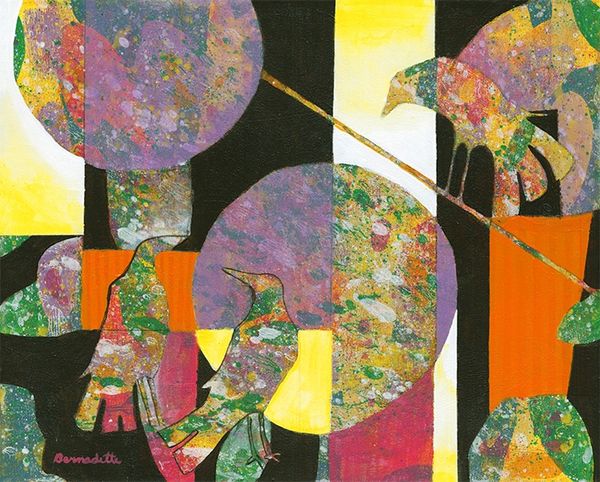
painting, oil-paint, impasto
#
portrait
#
painting
#
oil-paint
#
oil painting
#
impasto
#
expressionism
#
portrait art
Copyright: Charles Blackman,Fair Use
Curator: Here we have "Figure and Flowers," an oil painting attributed to Charles Blackman. It immediately strikes me with a sense of quietude. The muted palette and simplified forms evoke a dreamlike state, don't you think? Editor: The first thing that I notice is that incredibly dense impasto around those flowers! You can practically feel the texture and weight of the paint itself. Was Blackman trying to push oil paint to its sculptural limits here? It certainly deviates from purely representational concerns. Curator: Interesting perspective! I'm particularly drawn to the relationship between the figure and the floral arrangement. The figure, rendered in an almost monolithic blue, stands in profile, gazing intently at the vibrant bouquet. The contrast creates a dynamic tension. The juxtaposition, I believe, alludes to the nature of observation and subjective appreciation, a kind of meta-commentary. Editor: Well, let's consider how those vibrant flowers are made. Looking closely, the thick application isn't uniform—areas of heavier build-up imply repetition, almost rhythmic action from the artist. Given that the paintings are undated, understanding Blackman's method of applying this paint tells us something essential about how and when he made this piece. The blooms, by contrast, aren’t simply "observed" they’re intensely materialized! Curator: You raise an important point regarding method. But I remain captivated by how the abstraction allows the observer a wide interpretive space. One can explore themes like the fragility of beauty, the ephemerality of life itself, and the interplay of presence and absence. Editor: For me, that raw, visible making is less about “beauty” and more a testament to the labour—both the painter's labour and, of course, the implied labour involved in cultivating the flowers themselves, bringing to mind a social, historical context beyond mere “appreciation." Curator: Yes, the visible process of making—the impasto and visible brushstrokes—become powerful signifiers, as if what he wants you to understand is a state of perception beyond visual reality, and, really, feeling over fact. Editor: In essence, it reminds me to look more carefully at the art in front of me rather than immediately assigning cultural meaning, which would risk missing the material underpinnings of that significance.
Comments
No comments
Be the first to comment and join the conversation on the ultimate creative platform.
